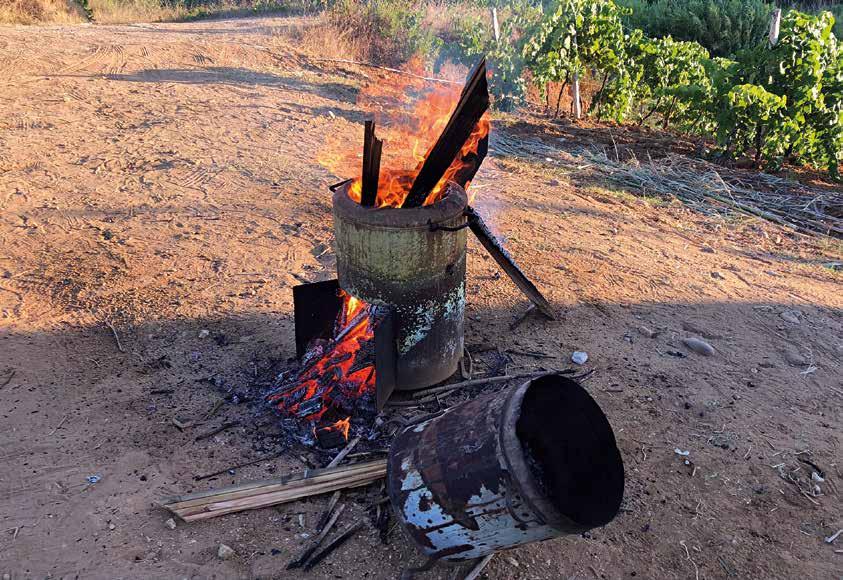Framed by the Sicilian rural landscape, artists and activists from Italy met to start a community where borders of life, art and politics blended together. During nationalist propaganda investment, experimental practices able to sabotage the dichotomy between leavers and remainers, globalists and nationalists emerge. Since Italy’s unification, rural areas have been sources of low-cost labour force for the urban and industrialized north. But today, the rural is the fire line. The capital is withdrawing, leaving behind the ruins of a never ended territorialisation. The new urban slaves, depressed and addicted, find in it a space of freedom and empowerment, while locals from rural areas find new energy to arrange their strategy to survive. This text tries to conceptualize the spontaneous path we are trying to follow.
Why should art (capital) be interested in a community approach?
– knowing everything that happens
– profiting from being everywhere
– having relations with everyone
What radical community(ies) put on the table today, on the altar of its own sacrifice, is: no money in exchange for some thing/nothing. What I experience living among communities, temporary or less, organized or not, is the fact that all the actions they perform are done for the sake of the community’s existence itself. This has nothing to do with the art system idea, producing contemporary aesthetics, ornamental artefacts and speculative financial-based value objects.
What is community art?
Assuming capital as pure automatic code, crunching data and rendering reality, imposing a totalitarian connection of personal durations functionalized to the general machine, community is a barricade against this latter stage of territorialisation. Firstly, community wants to prove that money-flowcan’t break relation links between community members. Art produced, not considering money as a necessary a-priori, is always avant-garde. Further on, community arises from time to time around a common goal. And because every single individual has its own proper strategy about the immanentfact of being here, in the world, community is ontologically temporary. It lasts until the moment when at least two of the community members perform any action whatsoever together. For these two reasons, community aesthetics embody their own survival strategy, or the whole set of strategy implemented by the community members.
Which strategy does contemporary radical community implement?
Community is committed to define a survival strategy rather than aesthetic. Its success depends on the fact of its pure existence. Economic inequality caused community to rethink what the conditions of existence are, starting from the fact that they are not money-based, but time-based. Conditions of existence are those that answer the question, “How long do you want to stay in”?
Firstly, we have to clarify the private and individual conditions of existence:
1. The minimum living standard (how)
2. One’s time for the community (long)
Then, we can start to discuss what the collective conditions of existence are:
– property
*from ownership to usership
– food
*growing it, supplying it locally, not buying it
– expenses
*everyone contributes according to their income and wealth
– alliances
*private sponsor, better if you bond with them, not through money
*local institution, ask for assurance and spaces
*get in contact with the community around oneself
Why erase any particular theme, topic or issue? And how is this related with object oriented ontology?
Conceptual frames are boring. No one likes to be trapped in anyone else’s fantasy. Topic or issue, as well as doing a collective project for the sake of participating, is not the right way to free collective entropy or the community engine. Living together and doing things together implies a series of functions and objects representing the nearest infrastructure on which community will expand its power of attraction. Discovering the function and creating the objects are a crucial direction followed by a common action. In this way, community avoids being trapped in a specific aesthetic, everything is possible, the future is open. There is actually nothing that can’t be approached through the community art method.
Who takes care of the time we spend together? What’s the relation between patience and time?
In their duration things appear and persist in their actuality. Time is the continuous comparison of a different duration. This is why its duration is the measure of its success. Community, being formed by individual human entity, has a fragmented lifetime made by individual commitment duration. The ultimate goal would be to develop a dispositive for which none feel trapped in the timeline of someone else. During a common duration, the time-keeper is the one taking care of the spontaneous agreement timelines have: to not colonize each other. Decolonization of another’s time passes through personal conflict, clash and riot. One against each other, community becomes toxic because it is manipulated and monopolized by those implementing consensus rule. Consensus doesn’t really work. That is why I believe in assuring a continuous dialectical conflict between community members. In the end, it is not necessary that everyone should agreed on everything. Community lasts when each member claims a space to make a decision. This process needs to be curated, protected and hidden. Out there, there are people who have only the worst intentions.
Leonardo Ruvolo is an art theorist and critic in Milan and Sicily.


